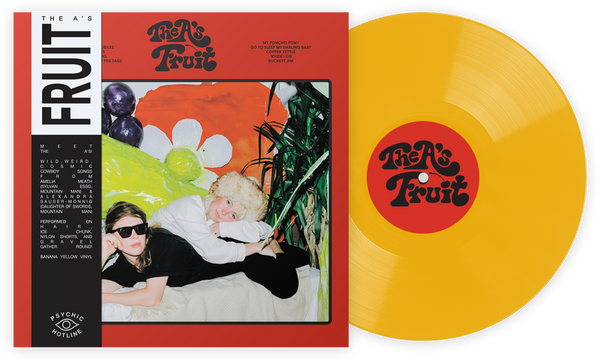Sebuah Primer Ya
A Guide To Getting Into The Overwhelming Catalog Of The Prog-Rock Legends
“Owner of a Lonely Heart,” hit tunggal No. 1 Yes, menerjang zeitgeist pada tahun 1983, dan masih hidup hingga hari ini berkat stasiun radio yang membanggakan kemampuannya untuk memutar lagu-lagu yang ramah kerja. Anda mungkin sudah mendengarnya setidaknya sekali dalam enam bulan terakhir: di sebuah lift, di kantornya dokter gigi, di toilet Applebee's. Dengan durasi hanya tiga menit lima puluh tujuh detik dalam versi single, lagu ini adalah sepupu jauh dari karya awal band tersebut. Pada saat hit ini dirilis, Yes telah eksis selama 15 tahun, telah merilis 10 album, dan telah mengganti lebih dari dua pertiga anggota aslinya. 90125, album yang menampilkan “Owner of a Lonely Heart”, adalah dorongan agresif untuk kesuksesan arus utama, dan sebagai konsekuensinya mengubah Yes menjadi band yang sama sekali berbeda. Faktanya, prinsip panduan Yes adalah evolusi.
Yes was founded in 1968, under the long shadow of psychedelic rock. The original lineup — bassist Chris Squire, guitarist Peter Banks, singer Jon Anderson, classically-trained keyboardist Tony Kaye, and drummer Bill Bruford — was built from the bones and ashes of previous rock bands. Banks and Squire were drawn to one another because they desired to make music with more life, more ambition. They found kindred spirits in Anderson, and Bruford shared a similar chip on his shoulder regarding the state of the music scene; Bruford often sported boots on which he’d scrawled “MOON GO HOME,” as a dig toward the Who drummer Keith Moon.
Over its 50 year life, Yes has had 14 different members, and in its current iteration, doesn’t feature any of the founding crew. While this may seem unusual for some groups, it seems natural that Yes, the pioneers of prog rock, the band that was there for the genre’s glorious rise and long, tragic fall, would continue to evolve, even past its original members. It’s precisely for this reason that getting a full understanding of Yes’s music is such an intimidating endeavor.
Dipping a toe into Yes’s library feels like swan-diving off Niagara Falls. It’s vast, bombastically ambitious and spans decades. The band wasn’t just unafraid to push themselves with every record, they felt it necessary to reinvent themselves more than once. The following isn’t simply a best-of list; it’s a map that charts the evolution of prog rock’s most interesting, evolutionary band.
Yes (1969)
After Banks’ band The Syn came apart, Banks and Squires masterminded Yes — the name came from Banks, who liked the succinctness of it, and thought the name would look great on posters. Yes’s self-titled debut happened lighting-quick. Yes formed in ’68; the first record hit the racks in ’69.
The songs of Yes, like many first records, revealed the raw, not-quite-distinct outline of what the band was capable of. While the overall sound of the record feels very much like a ’60s rock album, there are bright moments where you can see Yes experimenting with time signatures, pushing the limits of the genre toward something new, not yet easily defined. On the two covers — “I See You” by The Byrds and “Every Little Thing” by the Beatles — Yes’s goal to evolve past old styles of rock ’n’ roll is glaring. Yes’s versions of these songs contain heavier, more cacophonous layers of instrumentation, and aren’t afraid to slow things down for solos. These flourishes resemble jazz more than rock, and showcase each musician’s singular, irrepressible talent.
The Yes Album (1971)
By their third record, Yes had finally found their sound. This album was also the band’s commercial and critical breakthrough, garnering positive reviews and selling sixty thousand copies, earning No. 4 on the U.K. charts and 40 in the states. Rather than pepper the tracks with covers, The Yes Album featured solely original material. The band had spent the lion’s share of 1970 holed up in an old farmhouse writing and rehearsing the music, and their elbow grease paid off.
The album’s single “All Yours,” which is actually just the first half of the track “I’ve Seen All Good People,” was written by Anderson and Squire, and shows the band’s ability to slow down, and build slowly toward climax. This record also showcases the band’s willingness to experiment with a variety of guitar styles and different instrumentation. The Yes Album solidified Yes as one of the most exciting new bands, and quickly established them as leaders in the new, popular genre of prog rock.
Fragile (1971)
If The Yes Album is the album that found Yes’s sound, Fragile is where they perfected it. Filled with long, heady, polyphonic tracks that defy, break and completely disregard rock ’n’ roll conventions, Yes’s dedication to musical evolution during the writing of this album was not without its costs: Kaye was fired from the band for his refusal to incorporate instruments besides organ and piano into his songwriting. The band replaced him with Rick Wakeman, who was all too willing to experiment with Mellotron and Moog synthesizers.
The result of integrating synthesizers into the Yes soundscape is substantial, and is perhaps best seen on the song “South Side of the Sky,” which features jagged, commanding guitar riffs that are padded with ethereal synth riffs. The synth-drunk instrumentation makes the long, intermission-like break about halfway through the song, where every sound breaks off but a lone piano, all the more distinct, which makes the subsequent, slow build up all the sweeter. Fragile is a big, ambitious, theatrical record, and it very well may be their best.
Relayer (1974)
While it received lukewarm critical reception, Relayer shows a crucial return to the center for Yes. With their previous album, Tales from Topographic Oceans, Yes took a deep, uninteresting dive into the kind of cerebral, uncompelling experimentation that can only be described as self-indulgent. It is one thing you’d never expect from a Yes record: It was boring. Composed of only three songs, Relayer returned to the sort of jazz-infused songwriting that made their previous albums rip so hard. “Sound Chaser” is perhaps the most musically ambitious song Yes has written. It’s timing varies so much that when it hits a groove, it feels like finding a full canteen while wandering through a desert.
More importantly, Relayer marked the point where Yes began shying away from the grandiose, theatrical, noodling song structures. For several albums, Yes’s double-digit-length songs almost felt like plays with separate acts; after Relayer, Yes’s songs were shorter. Relayer also marked a shift in Yes’s critical reception. While they would enjoy commercial success for several more years, they’d fallen out of favor with music critics. Audiences had grown bored with high concepts and chronic time signatures; they longed for the short, brutal songs from an emerging genre called punk. Soon, prog would become a bad word, a label attached to the decidedly unhip. By the turn of the decade, Yes would have no choice but reinvent themselves.
Justin Carroll-Allan lives in Portland, OR with his wife, two dogs, and an arthritic cat. He has never been to Voodoo Doughnuts and thinks Phil Lynott is way cooler than Paul McCartney.
Related Articles
Bergabung dengan Klub!
Bergabunglah sekarang, mulai dari 44 $Exclusive 15% Off for Teachers, Students, Military members, Healthcare professionals & First Responders - Get Verified!












